Climate Change and Its Impacts on Farmer’s Livelihood in Different Physiographic Regions of the Trans-Boundary Koshi River Basin, Central Himalayas
Abstract
1. Introduction
2. Materials and Methods
2.1. Study Area
2.2. Study Area Data Collection
2.2.1. Climatic Data and Survey Questionnaire
2.2.2. Interviewees and Focus Group Discussions
2.3. Data Analysis
3. Results
3.1. Climatic Trends for the Different Physiographic Regions
3.2. Farmers’ Local Knowledge of Climate Change and Its Impact
3.2.1. Observed Indicators of Climate Change
3.2.2. Observed Impacts from Climate Change
3.3. The Characteristics of Agriculture and the Farming Households
3.3.1. Characteristics of Farming Households
3.3.2. Agricultural Characteristics
4. Discussion and Policy Implication
5. Conclusions and Future Prospects
Author Contributions
Funding
Institutional Review Board Statement
Informed Consent Statement
Data Availability Statement
Acknowledgments
Conflicts of Interest
References
- Allen, M.R.; Dube, O.P.; Solecki, W.; Aragón-Durand, F.; Cramer, W.; Humphreys, S.; Kainuma, M.; Kala, J.; Mahowald, N.; Mulugetta, Y.; et al. Framing and context. In Special Report on Global Warming of 1.5 °C; Masson-Delmotte, V., Zhai, P., Pörtner, H.-O., Roberts, D., Skea, J., Shukla, P.R., Pirani, A., Moufouma-Okia, W., Péan, C., Pidcock, R., et al., Eds.; IPCC: Geneva, Switzerland, 2018. [Google Scholar]
- Degroot, D.; Anchukaitis, K.; Bauch, M.; Burnham, J.; Carnegy, F.; Cui, J.; de Luna, K.; Guzowski, P.; Hambrecht, G.; Huhtamaa, H.; et al. Towards a rigorous understanding of societal responses to climate change. Nature 2021, 591, 539–550. [Google Scholar] [CrossRef] [PubMed]
- IPCC. Climate Change 2014: Impacts, Adaptation, and Vulnerability-Part A: Global and Sectoral Aspects-Working Group II Contribution to the Fifth Assessment Report of the Intergovernmental Panel on Climate Change; Cambridge University Press: Cambridge, UK, 2014; p. 1132. [Google Scholar]
- Negi, V.S.; Maikhuri, R.K.; Pharswan, D.; Thakur, S.; Dhyani, P.P. Climate change impact in the Western Himalaya: People’s perception and adaptive strategies. J. Mt. Sci. 2017, 14, 403–416. [Google Scholar] [CrossRef]
- Arunrat, N.; Wang, C.; Pumijumnong, N.; Sereenonchai, S.; Cai, W.J. Farmers’ intention and decision to adapt to climate change: A case study in the Yom and Nan basins, Phichit province of Thailand. J. Clean. Prod. 2017, 143, 672–685. [Google Scholar] [CrossRef]
- Piao, S.; Ciais, P.; Huang, Y.; Shen, Z.; Peng, S.; Li, J.; Zhou, L.; Liu, H.; Ma, Y.; Ding, Y.; et al. The impacts of climate change on water resources and agriculture in China. Nature 2010, 467, 43–51. [Google Scholar] [CrossRef]
- Descheemaeker, K.; Oosting, S.J.; Tui, S.H.-K.; Masikati, P.; Falconnier, G.N.; Giller, K.E. Climate change adaptation and mitigation in smallholder crop-livestock systems in sub-Saharan Africa: A call for integrated impact assessments. Reg. Environ. Chang. 2016, 16, 2331–2343. [Google Scholar] [CrossRef]
- Liang, X.-Z.; Wu, Y.; Chambers, R.G.; Schmoldt, D.L.; Gao, W.; Liu, C.; Liu, Y.-A.; Sun, C.; Kennedy, J.A. Determining climate effects on US total agricultural productivity. Proc. Natl. Acad. Sci. USA 2017, 114, E2285. [Google Scholar] [CrossRef] [PubMed]
- D’Anjou, R.M.; Bradley, R.S.; Balascio, N.L.; Finkelstein, D.B. Climate impacts on human settlement and agricultural activities in northern Norway revealed through sediment biogeochemistry. Proc. Natl. Acad. Sci. USA 2012, 109, 20332–20337. [Google Scholar] [CrossRef] [PubMed]
- Fuglie, K. Climate change upsets agriculture. Nat. Clim. Chang. 2021, 11, 294–295. [Google Scholar] [CrossRef]
- Ortiz-Bobea, A.; Ault, T.R.; Carrillo, C.M.; Chambers, R.G.; Lobell, D.B. Anthropogenic climate change has slowed global agricultural productivity growth. Nat. Clim. Chang. 2021, 11, 306–312. [Google Scholar] [CrossRef]
- Kotz, M.; Wenz, L.; Stechemesser, A.; Kalkuhl, M.; Levermann, A. Day-to-day temperature variability reduces economic growth. Nat. Clim. Chang. 2021, 11, 319–325. [Google Scholar] [CrossRef]
- Shrestha, U.B.; Shrestha, A.M.; Aryal, S.; Shrestha, S.; Gautam, M.S.; Ojha, H. Climate change in Nepal: A comprehensive analysis of instrumental data and people’s perceptions. Clim. Chang. 2019, 154, 315–334. [Google Scholar] [CrossRef]
- Manandhar, S.; Vogt, D.S.; Perret, S.R.; Kazama, F. Adapting cropping systems to climate change in Nepal: A cross-regional study of farmers’ perception and practices. Reg. Environ. Chang. 2011, 11, 335–348. [Google Scholar] [CrossRef]
- CBS. National Climate Change Impact Survey 2016: A Statistical Report; NPCS of Nepal, Central Bureau of Statistics: Kathmandu, Nepal, 2017; p. 241.
- Paudel, B.; Zhang, Y.; Yan, J.; Rai, R.; Li, L.; Wu, X.; Chapagain, P.S.; Khanal, N.R. Farmers’ understanding of climate change in Nepal Himalayas: Important determinants and implications for developing adaptation strategies. Clim. Chang. 2020, 158, 485–502. [Google Scholar] [CrossRef]
- Shah, R.D.T.; Sharma, S.; Haase, P.; Jähnig, S.C.; Pauls, S.U. The climate sensitive zone along an altitudinal gradient in central Himalayan rivers: A useful concept to monitor climate change impacts in mountain regions. Clim. Chang. 2015, 132, 265–278. [Google Scholar] [CrossRef]
- CBS. National Population and Housing Census 2011 (National Report); NPCS of Nepal, Central Bureau of Statistics: Kathmandu, Nepal, 2012; p. 264.
- Wu, H.; Xiong, D.; Liu, B.; Zhang, S.; Yuan, Y.; Fang, Y.; Chidi, C.L.; Dahal, N.M. Spatio-temporal analysis of drought variability using CWSI in the Koshi River Basin (KRB). Int. J. Environ. Res. Public Health 2019, 16, 3100. [Google Scholar] [CrossRef] [PubMed]
- Li, C.; Tang, Y.; Luo, H.; Di, B.; Zhang, L. Local farmers’ perceptions of climate change and local adaptive strategies: A case study from the middle Yarlung Zangbo River Valley, Tibet, China. Environ. Manag. 2013, 52, 894–906. [Google Scholar] [CrossRef]
- Uprety, Y.; Shrestha, U.B.; Rokaya, M.B.; Shrestha, S.; Chaudhary, R.P.; Thakali, A.; Cockfield, G.; Asselin, H. Perceptions of climate change by highland communities in the Nepal Himalaya. Clim. Dev. 2017, 9, 649–661. [Google Scholar] [CrossRef]
- Dahal, B.M.; Nani, R.; Smriti, G.; Sharma, C.M.; Rabindra, K.; Ahuti, S.; Bibhu, G. Changing trends in cultivation practices and adoption of climate adaptive farming in Eastern Nepal. Sustain. Agric. Res. 2018, 7, 52–62. [Google Scholar] [CrossRef][Green Version]
- Karki, R.; Gurung, A. An overview of climate change and its impact on agriculture: A review from least developing country, Nepal. Int. J. Ecosyst. 2012, 2, 19–24. [Google Scholar] [CrossRef]
- Pandey, R.; Bardsley, D.K. Social-ecological vulnerability to climate change in the Nepali Himalaya. Appl. Geogr. 2015, 64, 74–86. [Google Scholar] [CrossRef]
- Shrestha, A.B.; Bajracharya, S.R.; Sharma, A.R.; Duo, C.; Kulkarni, A. Observed trends and changes in daily temperature and precipitation extremes over the Koshi River Basin 1975–2010. Int. J. Clim. 2017, 37, 1066–1083. [Google Scholar] [CrossRef]
- Qi, W.; Zhang, Y.; Gao, J.; Yang, X.; Liu, L.; Khanal, N.R. Climate change on the southern slope of Mt. Qomolangma (Everest) region in Nepal since 1971. J. Geogr. Sci. 2013, 23, 595–611. [Google Scholar] [CrossRef]
- Bharati, L.; Gurung, P.; Jayakody, P.; Smakhtin, V.; Bhattarai, U. The projected impact of climate change on water availability and development in the Koshi Basin, Nepal. Mt. Res. Dev. 2014, 34, 118–130. [Google Scholar] [CrossRef]
- Sinha, R.; Gupta, A.; Mishra, K.; Tripathi, S.; Nepal, S.; Wahid, S.M.; Swarnkar, S. Basin-scale hydrology and sediment dynamics of the Kosi River in the Himalayan foreland. J. Hydrol. 2019, 570, 156–166. [Google Scholar] [CrossRef]
- Hussain, A.; Rasul, G.; Mahapatra, B.; Wahid, S.; Tuladhar, S. Climate change-induced hazards and local adaptations in agriculture: A study from Koshi River Basin, Nepal. Nat. Hazards 2018, 91, 1365–1383. [Google Scholar] [CrossRef]
- Mainali, J.; Pricope, N.G. High-resolution spatial assessment of population vulnerability to climate change in Nepal. Appl. Geogr. 2017, 82, 66–82. [Google Scholar] [CrossRef]
- Paudel, B.; Zhang, Y.; Yan, J.; Rai, R.; Li, L. Farmers’ perceptions of agricultural land use changes in Nepal and their major drivers. J. Environ. Manag. 2019, 235, 432–441. [Google Scholar] [CrossRef]
- Nguyen, T.P.L.; Seddaiu, G.; Virdis, S.G.P.; Tidore, C.; Pasqui, M.; Roggero, P.P. Perceiving to learn or learning to perceive? Understanding farmers’ perceptions and adaptation to climate uncertainties. Agric. Syst. 2016, 143, 205–216. [Google Scholar] [CrossRef]
- Zhao, Z.; Wu, X.; Zhang, Y.; Gao, J. Assessment of changes in the value of ecosystem services in the Koshi River Basin, central high Himalayas based on land cover changes and the CA-Markov model. J. Resour. Ecol. 2017, 8, 67–76. [Google Scholar] [CrossRef]
- Paudel, B.; Wu, X.; Zhang, Y.; Rai, R.; Liu, L.; Zhang, B.; Khanal, N.R.; Koirala, H.L.; Nepal, P. Farmland abandonment and its determinants in the different ecological villages of the Koshi River basin, central Himalayas: Synergy of high-resolution remote sensing and social surveys. Environ. Res. 2020, 188, 109711. [Google Scholar] [CrossRef]
- WMO. Guidelines on the Calculation of Climate Normals; World Meteorological Organization: Geneva, Switzerland, 2017. [Google Scholar]
- Pradhan, N.S.; Sijapati, S.; Bajracharya, S.R. Farmers’ responses to climate change impact on water availability: Insights from the Indrawati Basin in Nepal. Int. J. Water Resour. Dev. 2015, 31, 269–283. [Google Scholar] [CrossRef]
- Mann, H.B. Nonparametric tests against trend. Econometrica 1945, 13, 245–259. [Google Scholar] [CrossRef]
- Kendall, M.G. Rank Correlation Methods, 4th ed.; Charles Griffin: London, UK, 1975. [Google Scholar]
- Sen, P.K. Estimates of the regression coefficient based on Kendall’s Tau. J. Am. Stat. Assoc. 1968, 63, 1379–1389. [Google Scholar] [CrossRef]
- Gocic, M.; Trajkovic, S. Analysis of changes in meteorological variables using Mann-Kendall and Sen’s slope estimator statistical tests in Serbia. Glob. Planet. Chang. 2013, 100, 172–182. [Google Scholar] [CrossRef]
- Shrestha, S.; Yao, T.; Adhikari, T.R. Analysis of rainfall trends of two complex mountain river basins on the southern slopes of the central Himalayas. Atmos. Res. 2019, 215, 99–115. [Google Scholar] [CrossRef]
- Subba, S.; Ma, Y.; Ma, W. Spatial and temporal analysis of precipitation extremities of Eastern Nepal in the last two decades (1997–2016). J. Geophys. Res. Atmos. 2019, 124, 7523–7539. [Google Scholar] [CrossRef]
- Bolch, T.; Kulkarni, A.; Kääb, A.; Huggel, C.; Paul, F.; Cogley, J.; Frey, H.; Kargel, J.S.; Fujita, K.; Scheel, M. The state and fate of Himalayan glaciers. Science 2012, 336, 310–314. [Google Scholar] [CrossRef]
- Warwade, P.; Tiwari, S.; Ranjan, S.; Chandniha, S.K.; Adamowski, J. Spatio-temporal variation of rainfall over Bihar State, India. J. Water Land Dev. 2018, 36, 183. [Google Scholar] [CrossRef]
- Bhatt, D.; Maskey, S.; Babel, M.S.; Uhlenbrook, S.; Prasad, K.C. Climate trends and impacts on crop production in the Koshi River Basin of Nepal. Reg. Environ. Chang. 2014, 14, 1291–1301. [Google Scholar] [CrossRef]
- Bocchiola, D.; Brunetti, L.; Soncini, A.; Polinelli, F.; Gianinetto, M. Impact of climate change on agricultural productivity and food security in the Himalayas: A case study in Nepal. Agric. Syst. 2019, 171, 113–125. [Google Scholar] [CrossRef]
- Bhatta, L.D.; van Oort, B.E.H.; Stork, N.E.; Baral, H. Ecosystem services and livelihoods in a changing climate: Understanding local adaptations in the upper Koshi, Nepal. Int. J. Biodivers. Sci. Ecosyst. Serv. Manag. 2015, 11, 145–155. [Google Scholar] [CrossRef]
- Paudel, B.; Gao, J.; Zhang, Y.; Wu, X.; Li, S.; Yan, J. Changes in cropland status and their driving factors in the Koshi River Basin of the central Himalayas, Nepal. Sustainability 2016, 8, 933. [Google Scholar] [CrossRef]
- Bastakoti, R.C.; Bharati, L.; Bhattarai, U.; Wahid, S.M. Agriculture under changing climate conditions and adaptation options in the Koshi Basin. Clim. Dev. 2017, 9, 634–648. [Google Scholar] [CrossRef]
- Kong, B.; Deng, W.; Wang, Q.; Yu, H. Investigation and evaluation of agricultural water use in a least developed country—A case study in Koshi River Basin, Nepal. Hydrol. Res. 2019, 21, 658–675. [Google Scholar] [CrossRef]
- Dhital, S.; Koirala, M.; Dhungel, S.; Mishra, R.; Gulis, G. Climate change and its impacts on human health in Nepal. Health Educ. J. 2016, 4, 1–4. [Google Scholar] [CrossRef]
- Mishra, S.R.; Bhandari, P.M.; Rita, I.; Neupane, D.; Gurung, S.; Khanal, V. Climate change and adverse health events: Community perceptions from the Tanahu district of Nepal. Environ. Res. Lett. 2015, 10, 1–6. [Google Scholar] [CrossRef]
- Sujakhu, N.M.; Ranjitkar, S.; Niraula, R.R.; Pokharel, B.K.; Schmidt-Vogt, D.; Xu, J. Farmers’ perceptions of and adaptations to changing climate in the Melamchi Valley of Nepal. Mt. Res. Dev. 2016, 36, 15–30. [Google Scholar] [CrossRef]
- Pandey, R. Farmers’ perception on agro-ecological implications of climate change in the middle-mountains of Nepal: A case of Lumle Village, Kaski. Environ. Dev. Sustain. 2017. [Google Scholar] [CrossRef]
- Devkota, R.; Pandey, V.; Bhattarai, U.; Shrestha, H.; Adhikari, S.; Dulal, K. Climate change and adaptation strategies in Budhi Gandaki River Basin, Nepal: A perception-based analysis. Clim. Chang. 2017, 140, 195–208. [Google Scholar] [CrossRef]
- Lau, J.D.; Kleiber, D.; Lawless, S.; Cohen, P.J. Gender equality in climate policy and practice hindered by assumptions. Nat. Clim. Chang. 2021, 11, 186–192. [Google Scholar] [CrossRef]
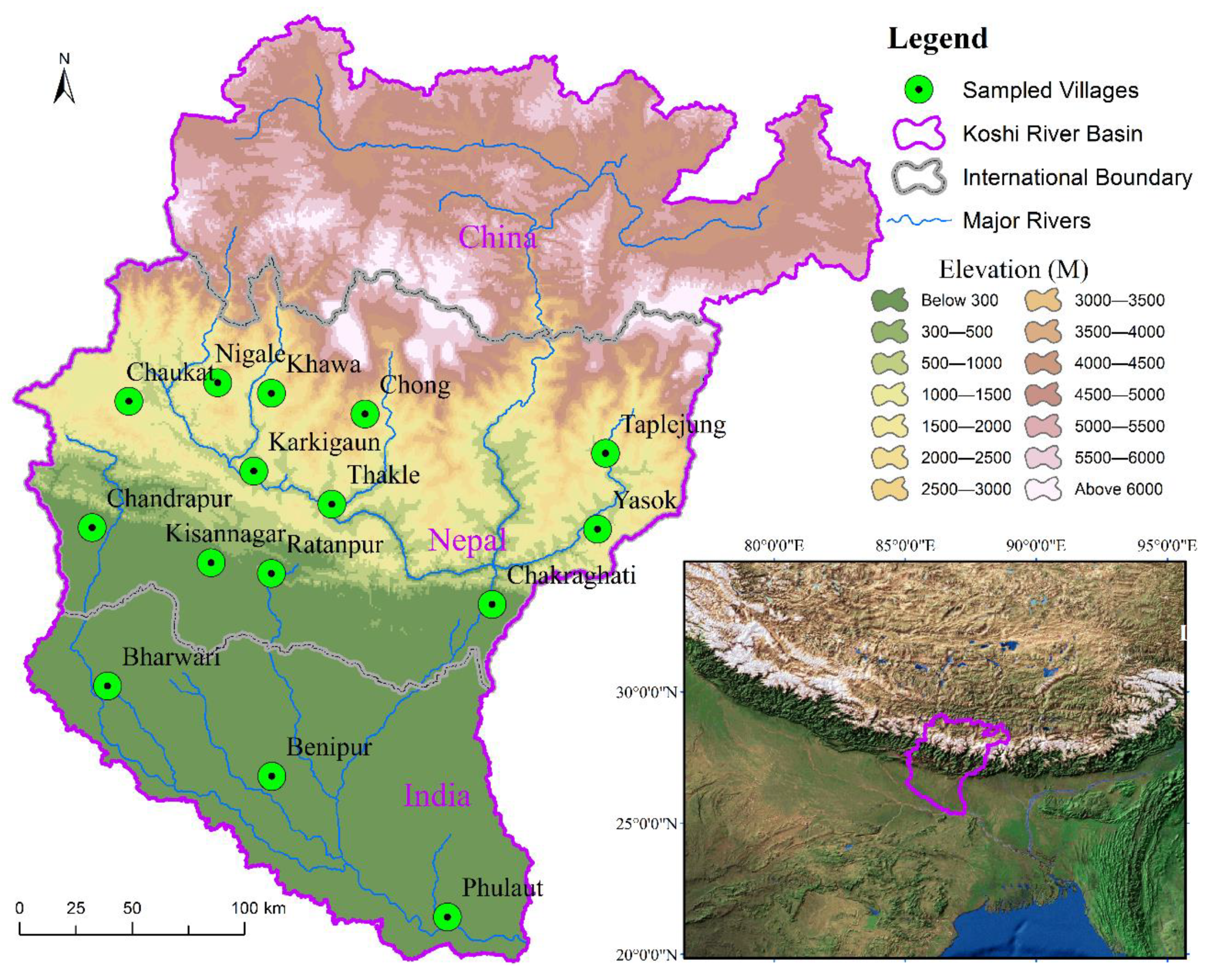

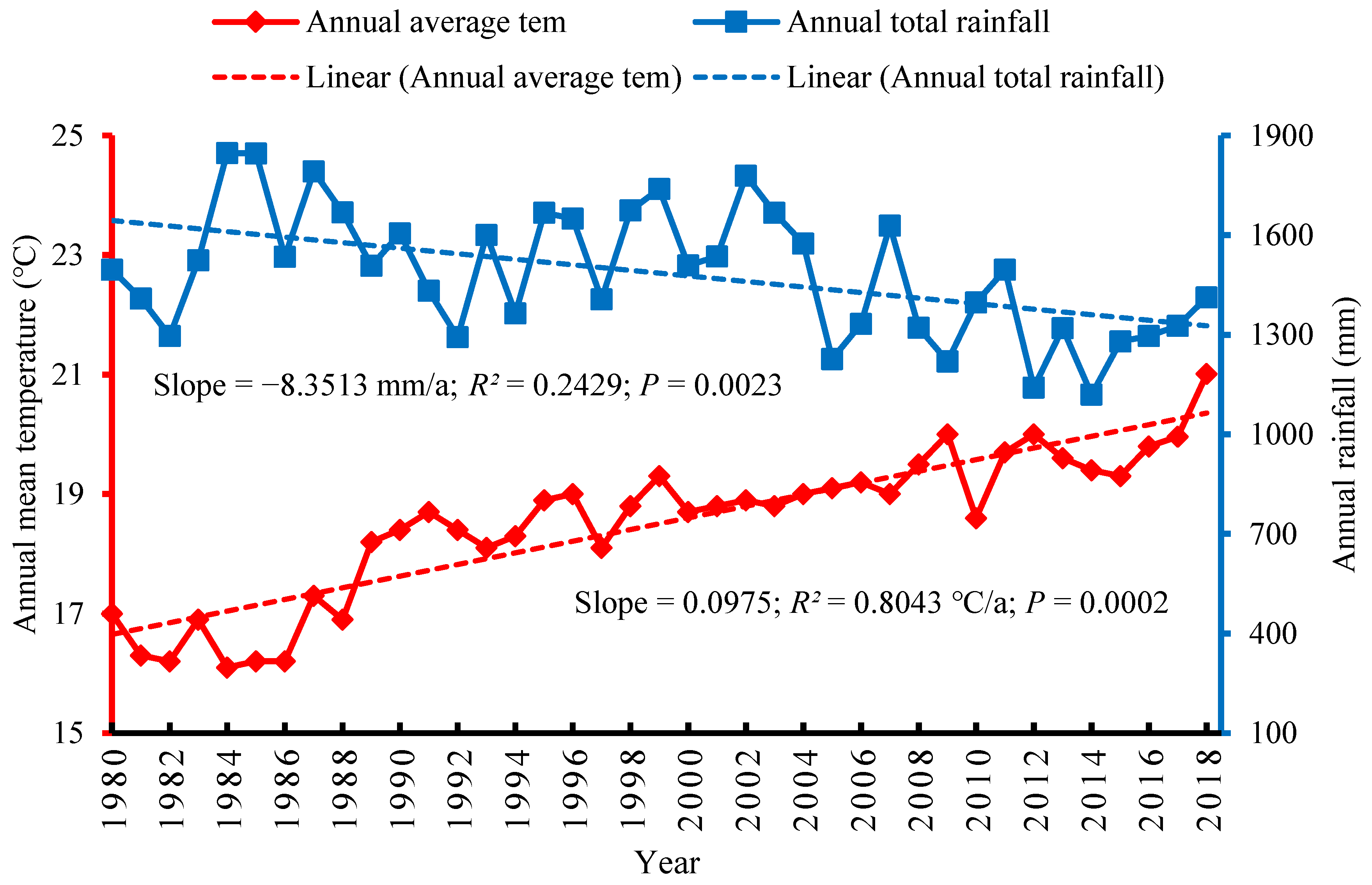
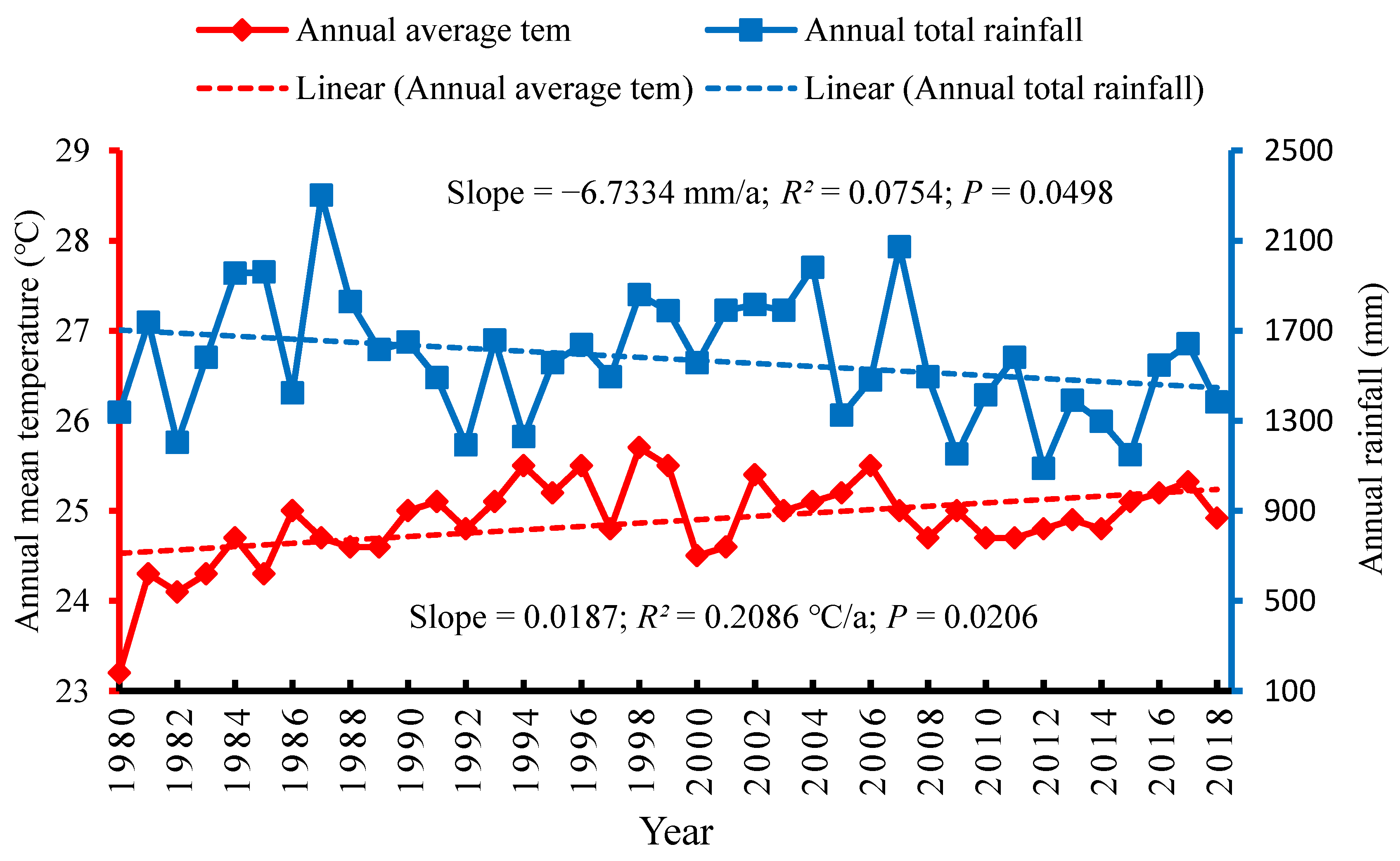
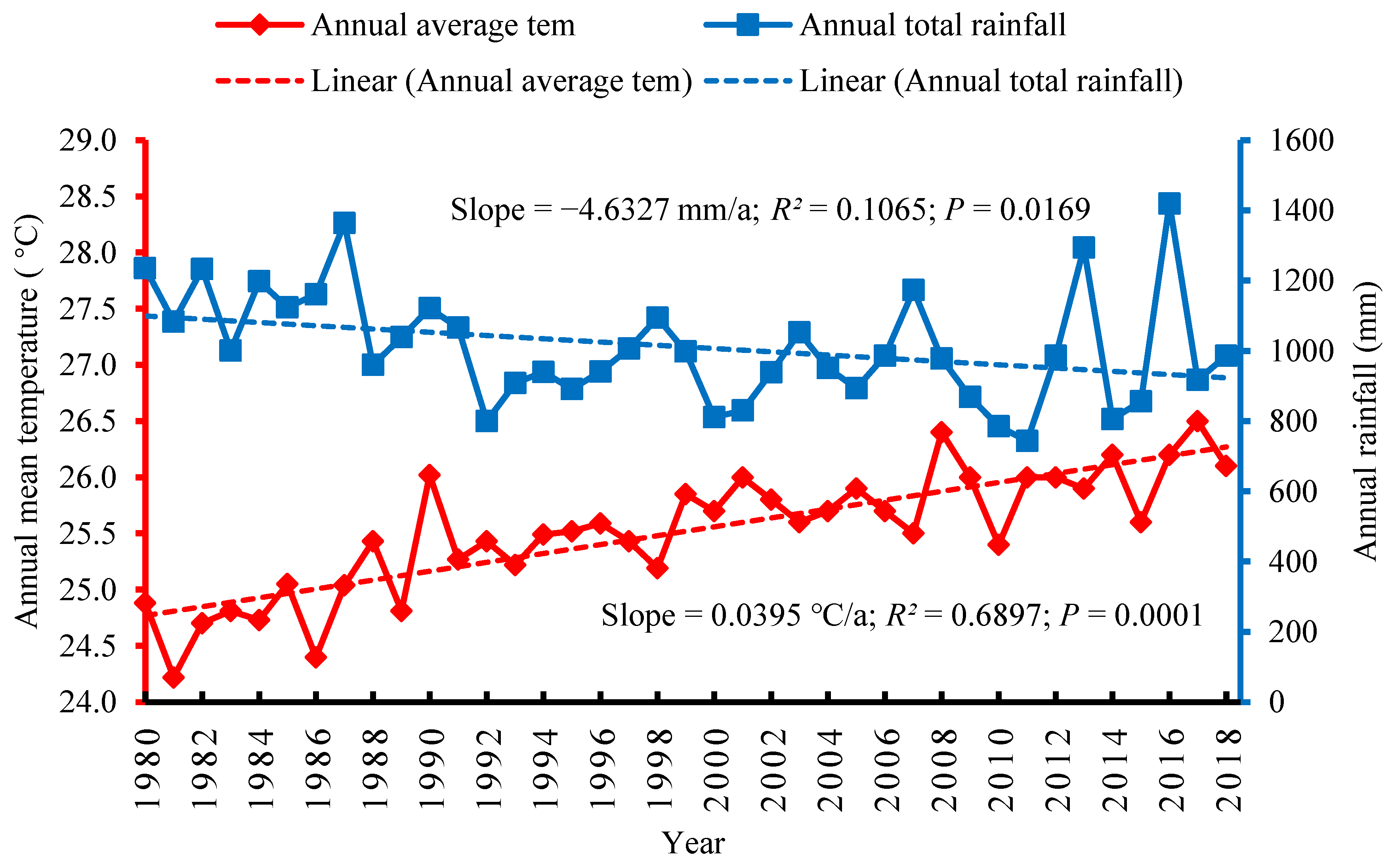
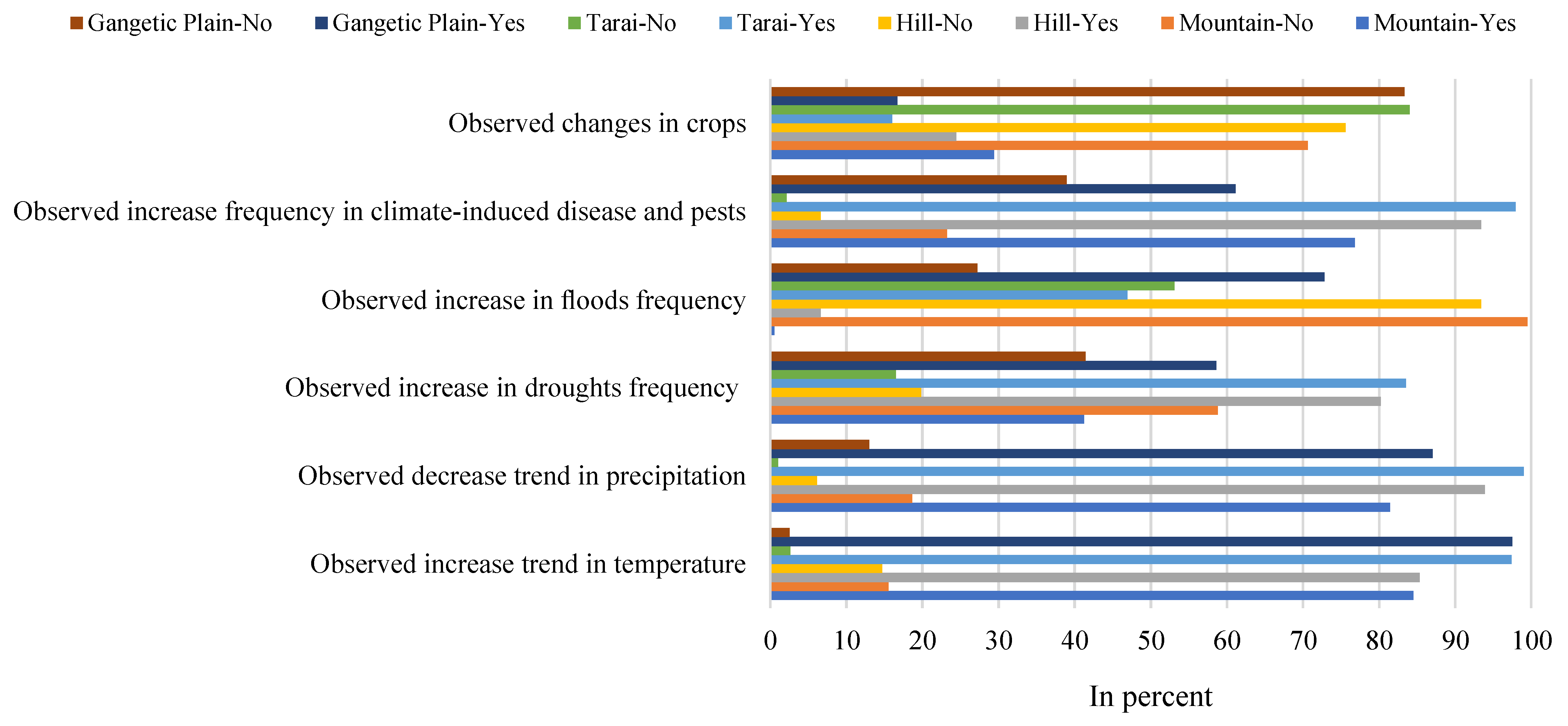

| Site of Sampling | District | Physiographic Region | Number of HSs | Country |
|---|---|---|---|---|
| Nigale | Sindhupalchowk | Mt. | 54 | Nepal |
| Khawa | Dolakha | Mt. | 54 | Nepal |
| Chong | Sindhupalchowk | Mt. | 54 | Nepal |
| Taplejung | Taplejung | Mt. | 32 | Nepal |
| Chaukat | Kavrepalanchowk | H | 57 | Nepal |
| Karkigaun | Ramechhap | H | 54 | Nepal |
| Thakle | Okhaldhunga | H | 54 | Nepal |
| Yasok | Pachthar | H | 32 | Nepal |
| Chandrapur | Rautahat | T | 54 | Nepal |
| Kisannagar | Mahottari | T | 54 | Nepal |
| Ratanpur | Siraha | T | 54 | Nepal |
| Chakraghati | Sunsari | T | 32 | Nepal |
| Bharwari | Sitamarhi | GP | 54 | India |
| Benipur | Darbhanga | GP | 54 | India |
| Phulaut | Madhepura | GP | 54 | India |
| Major Indicators | Basin Level Responses (%) | Physiographic Region Responses (%) | ||||||||
|---|---|---|---|---|---|---|---|---|---|---|
| Mt. | H | T | GP | |||||||
| Y | N | Y | N | Y | N | Y | N | Y | N | |
| Observed increase trend in temperature | 679 (90.9) | 68 (9.1) | 84.5 | 15.5 | 85.3 | 14.7 | 97.4 | 2.6 | 97.5 | 2.5 |
| Observed decrease trend in precipitation | 676 (90.5) | 71 (9.5) | 81.4 | 18.6 | 93.9 | 6.1 | 99.0 | 1.0 | 87.0 | 13.0 |
| Observed increase in droughts frequency | 495 (66.3) | 252 (33.7) | 41.2 | 58.8 | 80.2 | 19.8 | 83.5 | 16.5 | 58.6 | 41.4 |
| Observed increase in floods frequency | 223 (29.9) | 524 (70.1) | 0.5 | 99.5 | 6.6 | 93.4 | 46.9 | 53.1 | 72.8 | 27.2 |
| Observed increase frequency in climate-induced disease and pests | 622 (83.3) | 125 (16.7) | 76.8 | 23.2 | 93.4 | 6.6 | 97.9 | 2.1 | 61.1 | 38.9 |
| Observed changes in crops | 163 (21.8) | 584 (78.2) | 29.4 | 70.6 | 24.4 | 75.6 | 16.0 | 84.0 | 16.7 | 83.3 |
| Observed Major Impacted Sectors | Basin Level Responses (%) | Physiographic Region Responses (%) | ||||||||
|---|---|---|---|---|---|---|---|---|---|---|
| Mt. | H | T | GP | |||||||
| Y | N | Y | N | Y | N | Y | N | Y | N | |
| Impact noticed on major staple crops | 668 (89.4) | 79 (10.6) | 80.4 | 19.6 | 93.4 | 6.6 | 98.5 | 1.5 | 84.6 | 15.4 |
| Impact noticed on overall vegetation | 389 (52.1) | 358 (47.9) | 48.5 | 51.5 | 58.4 | 41.6 | 65.5 | 34.5 | 32.7 | 67.3 |
| Impact noticed on livestock | 513 (68.7) | 234 (31.3) | 54.1 | 45.9 | 77.7 | 22.3 | 86.1 | 13.9 | 54.3 | 45.7 |
| Impact noticed on human health | 616 (82.5) | 131 (17.5) | 73.2 | 26.8 | 88.8 | 11.2 | 84.0 | 16.0 | 84.0 | 16.0 |
| Impact noticed from disasters | 602 (80.6) | 145 (19.4) | 51.5 | 48.5 | 86.3 | 13.7 | 94.8 | 5.2 | 91.4 | 8.6 |
| Household Head Characteristics | Attribute | Total Number | % | By Physiographic Region (%) | |||
|---|---|---|---|---|---|---|---|
| Mountain | Hill | Tarai | Gangetic Plain | ||||
| Gender of respondent | Male | 611 | 81.8 | 83.0 | 76.1 | 78.9 | 90.7 |
| Female | 136 | 18.2 | 17.0 | 23.9 | 21.1 | 9.3 | |
| Marital status | Both parents alive | 631 | 84.5 | 86.1 | 82.7 | 77.3 | 93.2 |
| Divorced | 4 | 0.5 | 1.0 | 0.0 | 0.5 | 0.6 | |
| Widowed | 112 | 15.0 | 12.9 | 17.3 | 22.2 | 6.2 | |
| Level of education | Illiterate | 293 | 39.2 | 38.1 | 35.5 | 45.9 | 37.0 |
| Preschool/Informal | 102 | 13.7 | 21.6 | 16.2 | 12.4 | 2.5 | |
| Primary (1–5) | 91 | 12.2 | 14.9 | 11.7 | 7.7 | 14.8 | |
| Junior high school (6–10) | 142 | 19.0 | 16.0 | 22.3 | 16.5 | 21.6 | |
| Senior high school (11–12) | 69 | 9.2 | 4.6 | 8.6 | 12.4 | 11.7 | |
| Campus and above 12 class | 50 | 6.7 | 4.6 | 5.6 | 5.2 | 12.3 | |
| Age of respondent (years) | Average age | 55.9 | 54.5 | 56.9 | 59.3 | 52.2 | |
| Physical health | Good | 438 | 58.6 | 64.9 | 56.3 | 67.0 | 43.8 |
| General | 227 | 30.4 | 24.7 | 34.5 | 28.9 | 34.0 | |
| Poor | 65 | 8.7 | 8.2 | 7.1 | 3.6 | 17.3 | |
| Very poor | 17 | 2.3 | 2.1 | 2.0 | 0.5 | 4.9 | |
| Family size of respondent | Average family size | 5.8 | 5.3 | 5.8 | 6.0 | 6.3 | |
| Average monthly income (NRS) | Non-farm family income including remittances | 32,023.9 | 35,150.5 | 27,098.5 | 31,460.8 | 34,385.8 | |
| Agricultural Characteristics | Attribute Details | Total Number | % | By Physiographic Region (%) | |||
|---|---|---|---|---|---|---|---|
| Mountain | Hill | Tarai | Gangetic-Plain | ||||
| Total land owned (hectare) | Average land area | 0.77 | 0.79 | 0.53 | 0.71 | 1.13 ha | |
| Total livestock owned | Average livestock size | 7.6 | 10.1 | 8.2 | 7.1 | 4.2 | |
| Land tenure system | Land owned | 689 | 92.2 | 97.4 | 96.4 | 95.4 | 77.2 |
| Land rented | 58 | 7.8 | 2.6 | 3.6 | 4.6 | 22.8 | |
| Farming practices | Rain-fed cultivation | 428 | 57.3 | 83.5 | 92.9 | 25.3 | 21.0 |
| Irrigated cultivation | 319 | 42.7 | 16.5 | 7.1 | 74.7 | 79.0 | |
| Characteristics of soil | Fertile | 214 | 28.6 | 29.4 | 20.3 | 33.0 | 32.7 |
| Normal or Infertile | 533 | 71.4 | 70.6 | 79.7 | 67.0 | 67.3 | |
| Use of farm machinery | Yes | 449 | 60.1 | 32.0 | 26.4 | 98.5 | 88.9 |
| No | 298 | 39.9 | 68.0 | 73.6 | 1.5 | 11.1 | |
| Use of hybrid seeds | Yes | 400 | 53.5 | 40.2 | 41.1 | 56.2 | 81.5 |
| No | 347 | 46.5 | 59.8 | 58.9 | 43.8 | 18.5 | |
| Use of chemical fertilizers | Yes | 631 | 84.5 | 58.8 | 86.8 | 96.4 | 98.1 |
| No | 116 | 15.5 | 41.2 | 13.2 | 3.6 | 1.9 | |
| Use of pesticides | Yes | 398 | 53.3 | 8.2 | 42.6 | 71.6 | 84.6 |
| No | 349 | 46.7 | 91.8 | 57.4 | 28.4 | 15.4 | |
Publisher’s Note: MDPI stays neutral with regard to jurisdictional claims in published maps and institutional affiliations. |
© 2021 by the authors. Licensee MDPI, Basel, Switzerland. This article is an open access article distributed under the terms and conditions of the Creative Commons Attribution (CC BY) license (https://creativecommons.org/licenses/by/4.0/).
Share and Cite
Paudel, B.; Wang, Z.; Zhang, Y.; Rai, M.K.; Paul, P.K. Climate Change and Its Impacts on Farmer’s Livelihood in Different Physiographic Regions of the Trans-Boundary Koshi River Basin, Central Himalayas. Int. J. Environ. Res. Public Health 2021, 18, 7142. https://doi.org/10.3390/ijerph18137142
Paudel B, Wang Z, Zhang Y, Rai MK, Paul PK. Climate Change and Its Impacts on Farmer’s Livelihood in Different Physiographic Regions of the Trans-Boundary Koshi River Basin, Central Himalayas. International Journal of Environmental Research and Public Health. 2021; 18(13):7142. https://doi.org/10.3390/ijerph18137142
Chicago/Turabian StylePaudel, Basanta, Zhaofeng Wang, Yili Zhang, Mohan Kumar Rai, and Pranesh Kumar Paul. 2021. "Climate Change and Its Impacts on Farmer’s Livelihood in Different Physiographic Regions of the Trans-Boundary Koshi River Basin, Central Himalayas" International Journal of Environmental Research and Public Health 18, no. 13: 7142. https://doi.org/10.3390/ijerph18137142
APA StylePaudel, B., Wang, Z., Zhang, Y., Rai, M. K., & Paul, P. K. (2021). Climate Change and Its Impacts on Farmer’s Livelihood in Different Physiographic Regions of the Trans-Boundary Koshi River Basin, Central Himalayas. International Journal of Environmental Research and Public Health, 18(13), 7142. https://doi.org/10.3390/ijerph18137142







